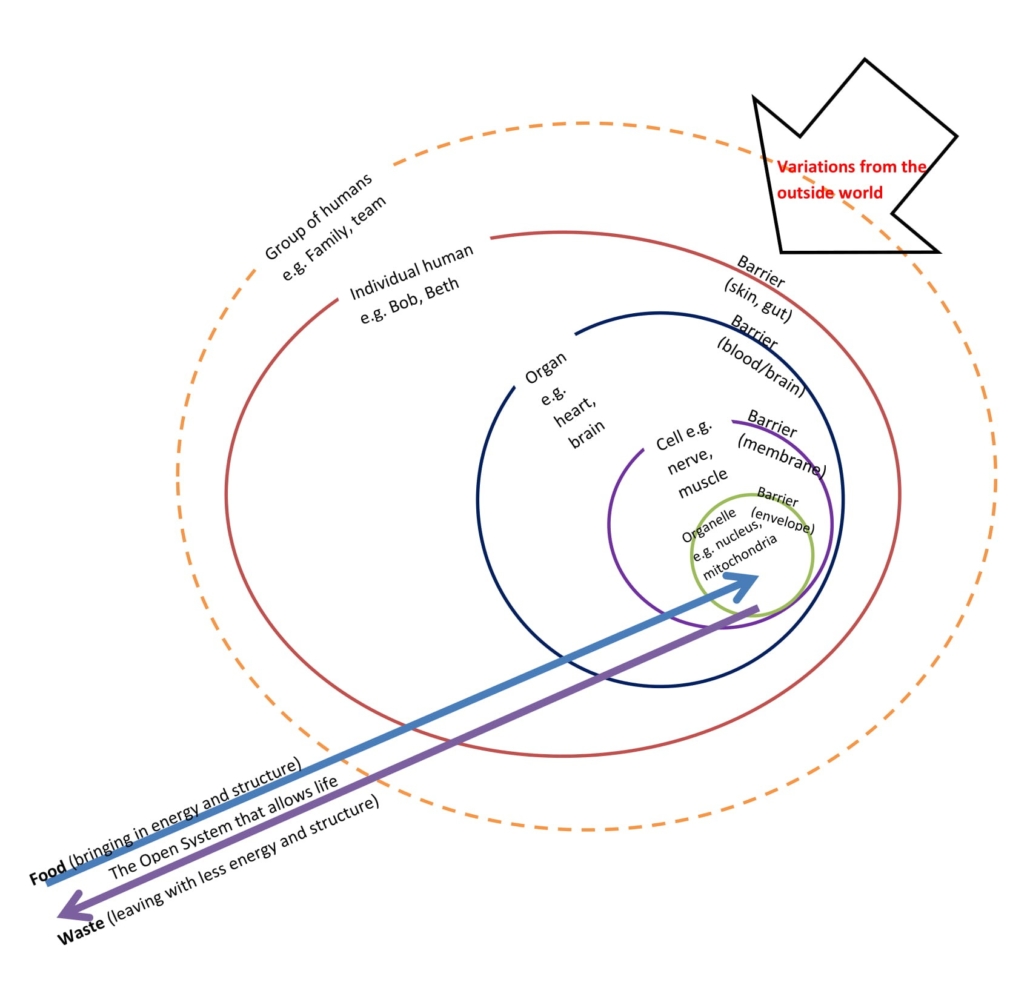Life
Life is a set of nested enclosed volumes each with a boundary that signals to the interior volume the exterior conditions in order to maintain or increase order by effectively countering the variations of the outside world that ultimately are derived from the increases of randomness dictated by the Second Law of Thermodynamics.
Asexual Cells
Asexual organisms do not age. They reproduce by simple cell division. If these cells aged the two “daughter cells” would not start life out at an age of 0 (like you did) and the organism’s evolutionary prospects would not be good. This brings up an important point: there is no mandate in evolution to age.
Germline cells
The germline cells of sexual animals do not age. Ask yourself, how old was your mother when you were born? How did you start out as a 0-year-old baby (or fertilized egg)? The answer is that your mother did not give you an aged cell, but gave you a cell that she had carried with her over the years and had repaired diligently so you could have the best send off with your first cell (fertilized egg). Dad did his part as well. Each of us is decedent from a long line of germline cells that have not aged. This brings up the second point: only somatic (non-germline) cells of sexual organisms age.
Pre-pubescent somatic cells
Somatic cells themselves have been demonstrated to only start aging after puberty and have the ability to stave off aging under special circumstances (calorie restriction). This demonstrates the third point: somatic cells retain their repair system, although the repair system of somatic cells is only used sparingly. This point, of humans having a functioning repair system in their somatic cells, is essential for age reversal to happen in humans. The ability to turn on a somatic cell repair system, that is evolutionarily programmed to tend to stay off, is also central to human age reversal.
Somatic cells and organismic sexuality
Somatic cell aging is also tied to organismic sexuality (see patent application for further discussion). In one model research organism (flat worm) germline (sex) cells are able to send a physical message to somatic cells to stop them from spending energy on repair. This has not been shown in humans but it is expected (by the writer) that germ line cells of humans also send a message to somatic cells after puberty not to spend energy on repair which then starts the aging process. If such a process is a reality in humans and understood, it would be possible to control aging at a regulatory level instead of at a biochemical level, by setting the control system back to a pre-puberty setting by changing epigenetics (most likely methylation) of the somatic cell.





